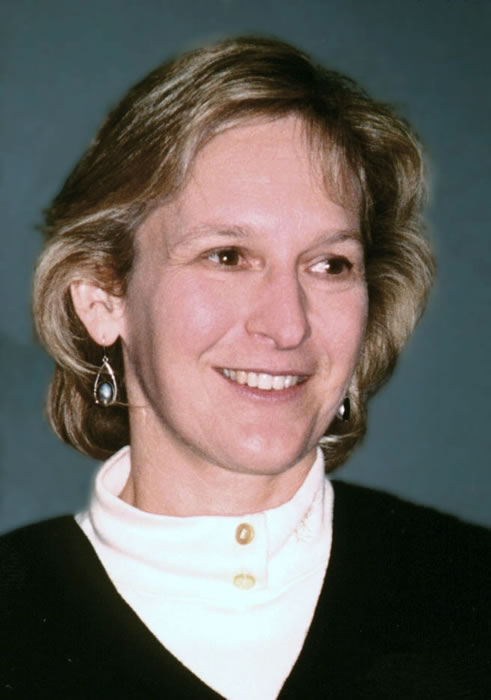Viral Defense

Connie Schmaljohn
... is a virologist. She is Chief of the Department of Molecular Virology at the US Army Medical Research Institute for Infections Diseases (USMRIID), in Reston, VA. Dr. Schmaljohn and her colleagues work to optimize the wellness of military personnel in combat and peacekeeping pursuits around the world, while treating illnesses indigenous to foreign countries. She specializes in DNA vaccines for hantaviruses, filoviruses and tick-borne flaviviruses.
Audio Preview:
|
Picture a vaccine that protects everyone from everything. Not likely. But DNA vaccines for RNA viruses -- what Dr. Connie Schmaljohn's group works on -- may well get us further toward that goal. In addition to promising to be effective against disease, so far the DNA vaccination has not shown any deleterious effects on our own genes. Dr. Connie Schmaljohn is Chief of the Department of Molecular Virology at the United States Army Medical Research Institute of Infectious Diseases (USAMRIID), where she and her colleagues are inspired by the prospect that vaccines they develop for military use have vast potential for helping all of humanity. The type of work and the goals of USAMRIID haven't changed much over the decades, according to Dr. Schmaljohn, but the way they do the work and the tools they use have changed dramatically. The scientists have a growing bag of tricks, including the hope of multivalent vaccines -- vaccines that protect a person from several things at once -- which are cost-effective, with the least pain and downtime for soldiers (USAMRIID's primary concern), a vaccine mechanism that will be easy and cheap. And, eventually, available to all of us. Directed "applied" research is very much the focus of USAMRIID. They're looking for specific answers to particular questions. DNA vaccines are being developed for Dr. Schmaljohn's specialties -- Hanta viruses, Ebola viruses and tick-borne encephalitis. But the underlying need for continuing basic research (out of favor with many sources of funding in recent decades) reveals itself in stories of medical researchers figuring out how to address a disease in one part of the world because they had studied disease processes in entirely different environments -- epidemiological studies which allow them to look at where these new things are coming from, as well as studying the absolute basic characteristics of the viruses. Reminding us that the United States has no biological warfare program, Dr. Schmaljohn affirms that we do have a biological warfare defense program. And yes, she's aware that there can be a fine line between the two. The military's infrastructure permits some health care delivery that civilians (with underfunded public health systems) may well envy. Individual states are now thinking about widespread biological threats to health and are beginning to develop their own organizations to consider what to do in the face of biological warfare. Back to DNA vaccines. Dr. Schmaljohn has a personal concern that not enough young women are being encouraged to get into science, not enough mature women are succeeding in its top echelons. Like much of the research agenda itself, it's another long-term problem with no easy fix in sight. Dr. Schmaljohn predicts dramatic advances in vaccines. She also acknowledges there's a lot we don't know. She and her colleagues at USAMRIID confront viruses -- known and unknown -- intent on keeping U.S. military personnel healthy, all over the world. At the same time, the human population swells and all of us interact, everywhere. Winners to be announced ... . [This Program was recorded January 28, 2000, in Taos, New Mexico, U.S.]
|








